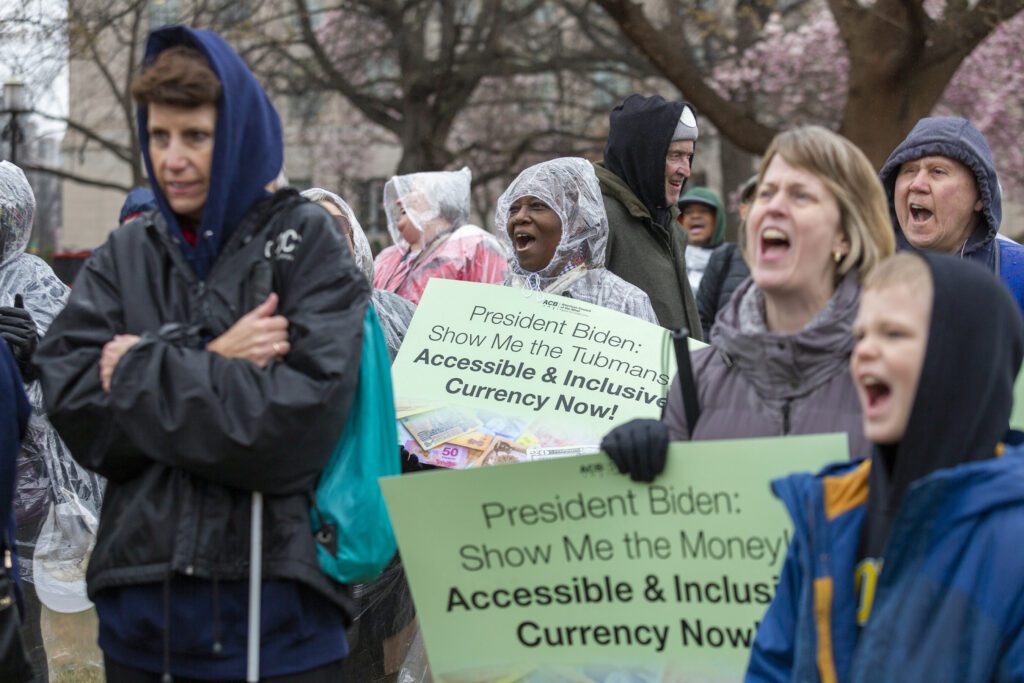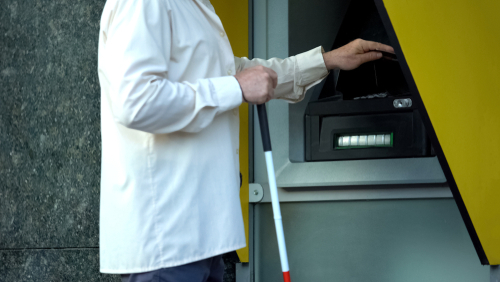Colonial notes, the first form of paper currency used in the U.S., came about in 1690. Since that time, U.S. currency has, of course, undergone numerous changes – not unlike the history of the nation itself. Now, disability activists and allies across the country are urging the government to update paper currency yet again, with a specific request for U.S. money to be redesigned with accessible features.
It wasn’t until 1913 that the Federal Reserve Act created our enduring modern form of money. In recent years, though, citizens have called for a greater diversity of featured historical figures to better represent America’s past, present and future. Regarding the latter, however, some argue that the major shift of altering money may not be worth the effort if more citizens transition to using digital currency.
Banking on Inclusion
Requests for accessible currency was most recently made at an advocacy event on Harriet Tubman Day, a diversity-themed observance held annually on March 10 in honor of anti-slavery activist Harriet Tubman. Disability activists and supporters rallied at the “Show Me the Money: Marching Together for Accessible and Inclusive Currency” event in front of the White House with speakers, including leaders of the American Council of the Blind (ACB), declaring the need for inclusive monetary modifications.
The diverse crowd – comprised of people with and without disabilities – chanted in unison: “Show me the money!” The peaceful protest continued with a march to the U.S. Treasury in Washington, D.C., with passionate supporters braving unfavorable rainy conditions.

U.S. Money to be Redesigned
Working with the U.S. Treasury, a modest timeline has been set for select currency redesigns. The resign of the $10 bill is scheduled for 2026, followed by the redesign of the $50 bill slated for 2028 and, lastly, the redesign of $20 bill (which will include a portrait of Harriet Tubman) in 2030. However, as previously noted, some are pushing back. That’s why, even though a 2008 Federal Court Order says that any new currency redesigns must include accommodations for individuals who are blind and/or low vision, activists believe continual championing of the effort is necessary.
Kelly Gasque, ACB’s Manager of Communications, told AmerDisability that these accessible redesigns will include “a raised tactile feature, so that people who are blind can differentiate between different denominations, and a larger font and higher contrast numeric value to be more easily read by people with low vision.”
As a result of the recent rally on Harriet Tubman Day, five ACB members met with representatives of the U.S. Treasury and Bureau of Engraving and Printing. For the first time, they touched the certified tactile feature that will be included as part of the $10 bill redesign.
“The U.S. Treasury and Bureau of Engraving and Printing committed to meet quarterly with the American Council of the Blind to update us on their milestones and major accomplishments leading up to the launch of the accessible $10 bill in 2026 as a result of the currency rally,” Gasque told AmeriDisability.

“50 years of advocating and 20 years of litigation have brought us to this momentous occasion,” said ACB’s President Dan Spoone. “We are on the cusp of the United States joining the more than 100 nations whose currency is already accessible to people who are blind and low vision, and the American Council of the Blind remains resolute in our advocacy to help the Biden Administration and the U.S. Treasury finish the job.”
The issue at hand is yet another example of people with disabilities experiencing discrimination. The fight for equal access continues. If we as a society proclaim to value diversity, isn’t making U.S. money accessible and inclusive worth every penny?






